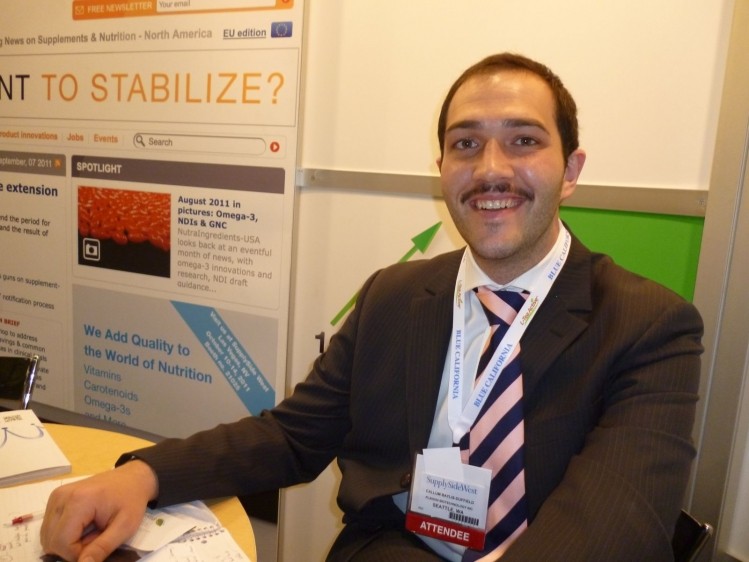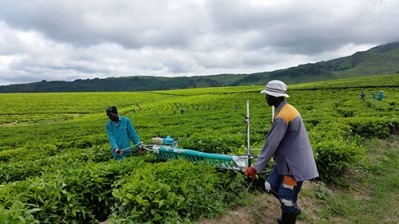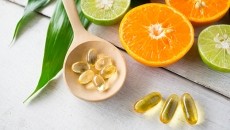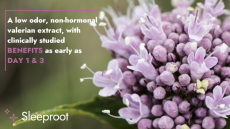Plandaí Biotech promises bioavailability step change for raft of phytonutrients from green tea catechins to citrus extracts

Ultra-bioavailable lycopene, phytoene and phytofluene are expected to follow in 2014.
Plandaí’s corporate HQ is in Seattle but its core operations are in the province of Mpumalanga, South Africa, where it grows green tea, fruits and timber, and will commence production of botanical extracts for the food and supplement sectors via a new processing facility scheduled for completion in July 2013.
Speaking to us at the Supply Side West trade show in Las Vegas last month, vice president Callum Baylis-Duffield (pictured) said his firm had developed a proprietary CRS processing and extraction system for live plant materials that alters the isomeric properties of phytonutrients in live plant material and rearranges them in a ratio such that they are significantly better absorbed.
Buyers are starting to realize that bioavailability is as important as purity
In human tissue, he said, antioxidants are normally found in both cis and trans isomer compounds in a 50/50 ratio.
However, flavonoids in green tea might have a 95:5 cis:trans structure, while lycopene in tomatoes usually has a 95:5 trans-to-cis ratio. In both cases, the bioactive components are therefore very poorly absorbed.
Plandaí’s process changes trans-isomers into the cis form (eg. for lycopene) or vice versa (changes cis-isomers into the trans form, eg. for green tea catechins and citrus limonoids and bioflavanoids), such that the end product is far more bioavailable, representing a step change in the industry, he said.
"Cis-trans interconversion is presently acknowledged as one of the molecular bases of supramolecular chemistry which has opened the way to novel applications in molecular engineering, in particular, for the design of more efficient pharmaceuticals and nutraceuticals."
Most green tea extracts are still sold on purity, he added, "but many of the green tea high purity EGCG extracts on the market have bioavailability of just 1-10%. However, buyers are now starting to realize that what matters just as much is whether they are selling something that our bodies can actually process.
“We are in talks with some large players in foods and supplements because they recognize that our products can help them differentiate themselves in the market. We’re talking about completely new botanical extracts, not just another green tea extract.”
A step change for the industry
Given that the dosages required are smaller, the extracts will also be cost competitive, he said.
“By the end of 2012, we expect to have completed the product profiling with green tea, producing a 95-98% catechin extract, caffeine removed”, he said.
Rapid expansion
Unlike many green tea extracts that just focus on epigallocatechin-3-gallate (EGCG), Plandai has developed an eight catechin extract with high levels of released immature catechins, added Baylis-Duffield, who expects the firm to expand rapidly next year.
“Today we have around 90 people; in 18 months’ time, we’ll be around 500”, he said.
“We’re aiming to revive not only the tea estates and other farms but also to empower the local communities who will benefit from employment and education opportunities.”
Smaller particles
According to an USDA study published in Food Chemistry (June 2012 pp1156-1160), levels of the more bioavailable cis-lycopene isomers increased significantly when whole fresh tomatoes were processed using Plandaí's proprietary method.
A larger amount of total lycopene, phytoene and phytofluene was also recovered from CRS treated tomato samples when measured against conventional processing and recovery.
In the study, ‘Effects of a hydrodynamic process on extraction of carotenoids from tomato’, research biologist Dr. Betty Ishida evaluated the results of using “a proprietary hydrodynamic method” for processing whole fresh tomato and found that it increased extracted cis-lycopene to as high as 43% of the total lycopene (vs 8-9% for untreated samples).
A gentler processing method
She added: “In nature, lycopene exists almost exclusively as the all-trans stereoisomer.
“This proprietary hydrodynamic method of treating vegetable matter provides increased accessibility of carotenoids to extraction procedures on tomato, while changing the stereoisomeric profile of lycopene to one that is more bioavailable and therefore more beneficial to consumers.”
She added: “Because many mechanical processes typically employed to disrupt tissues (cutting, shearing, macerating) contribute to thermal or oxidative degradation of labile, biologically active molecules, alternative, gentler disrupting methods should be evaluated.
“One such method is the use of hydrodynamic methods to decrease the size of particles, while possibly altering the stereochemical form of the carotenoids.”



















